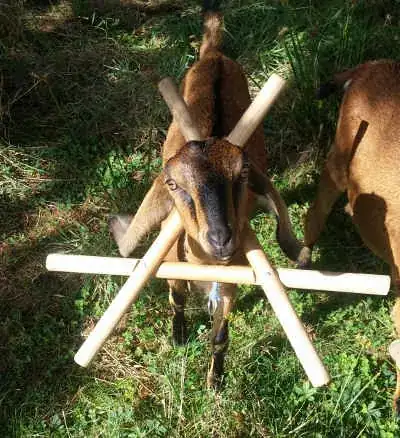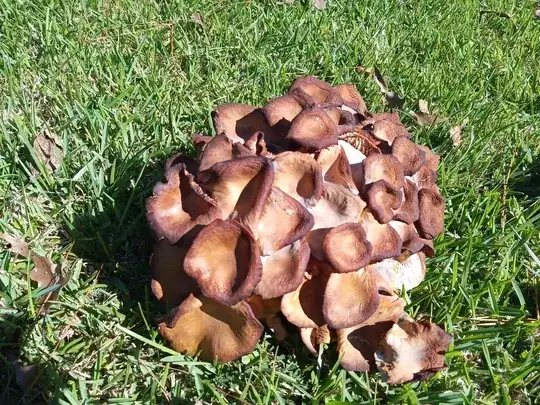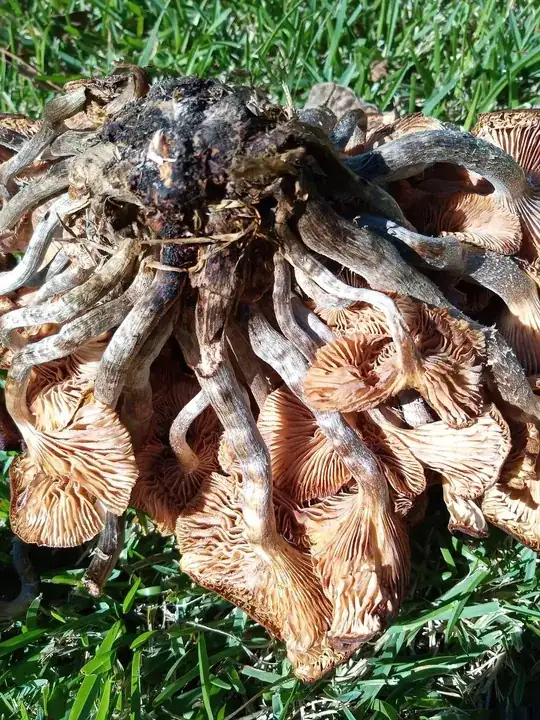Any guesses as to what kind of mushrooms these are. They were growing at the base of an old Oak tree stump in the bright sunlight. I've provided a number of different views. I'm located on Lake Houston in the greater Houston area.
Edit: I've now found these same mushrooms in several other areas of the yard, mostly growing in the lawn and also in some dirt patches, both in the sun and in the shade.


